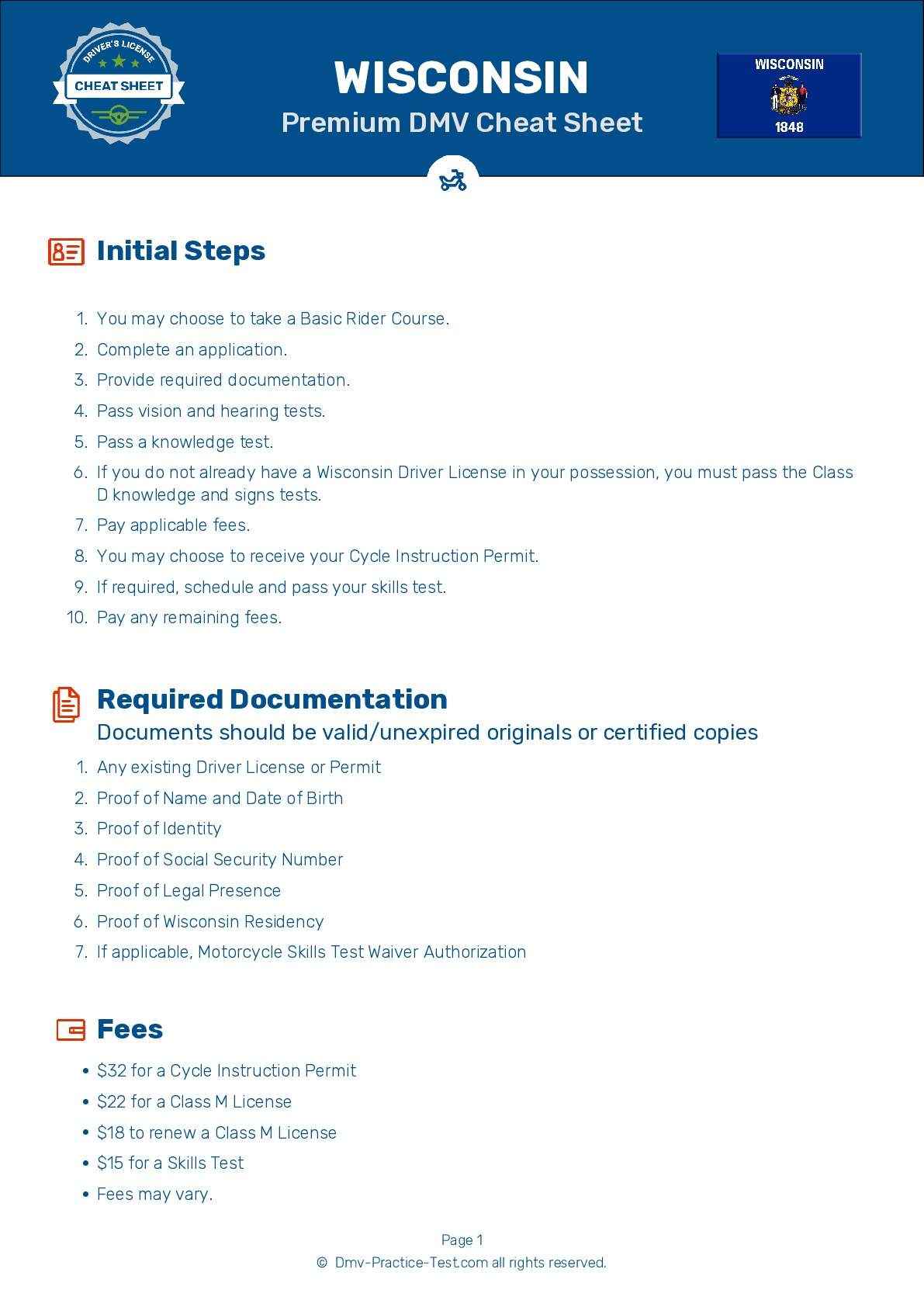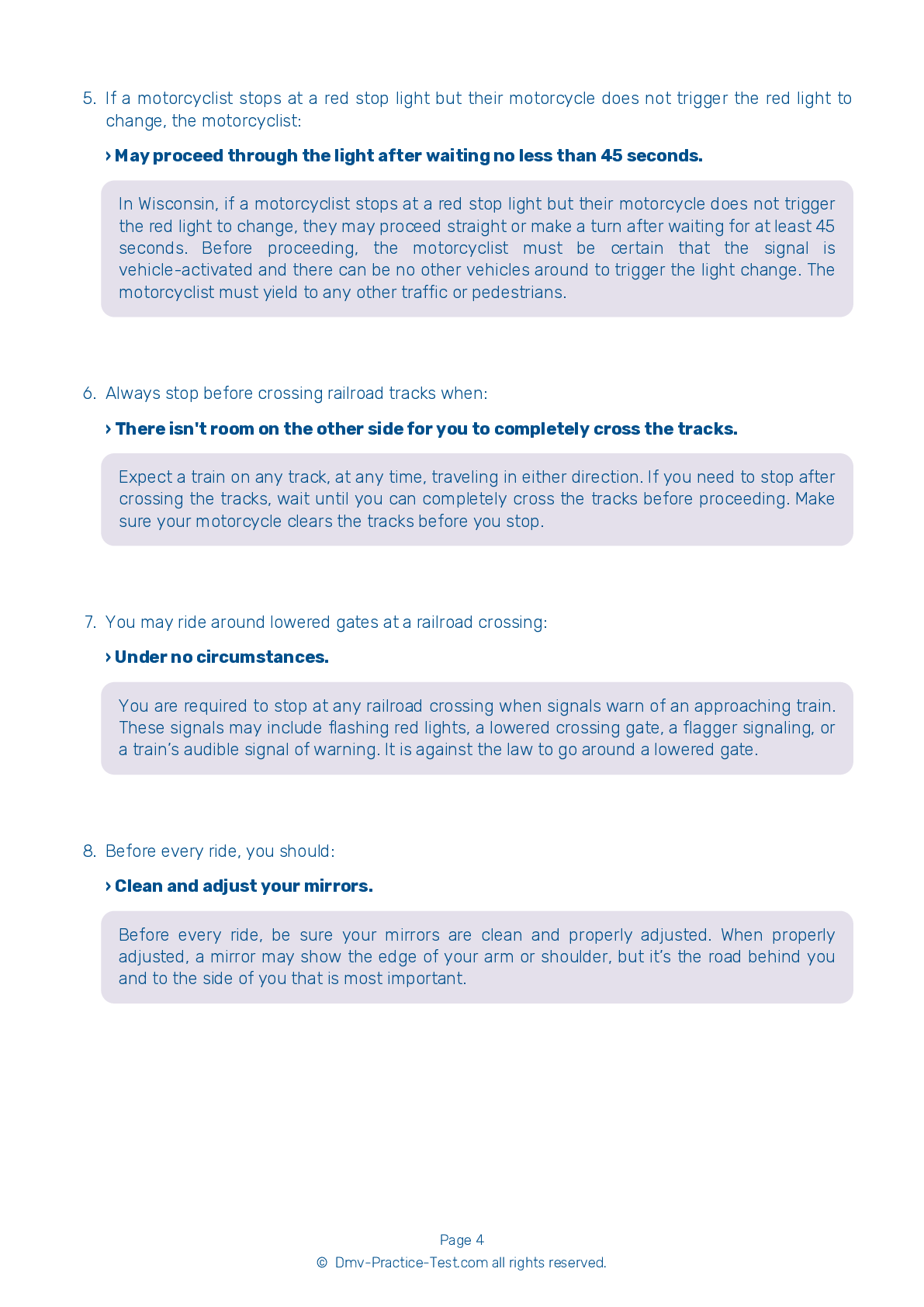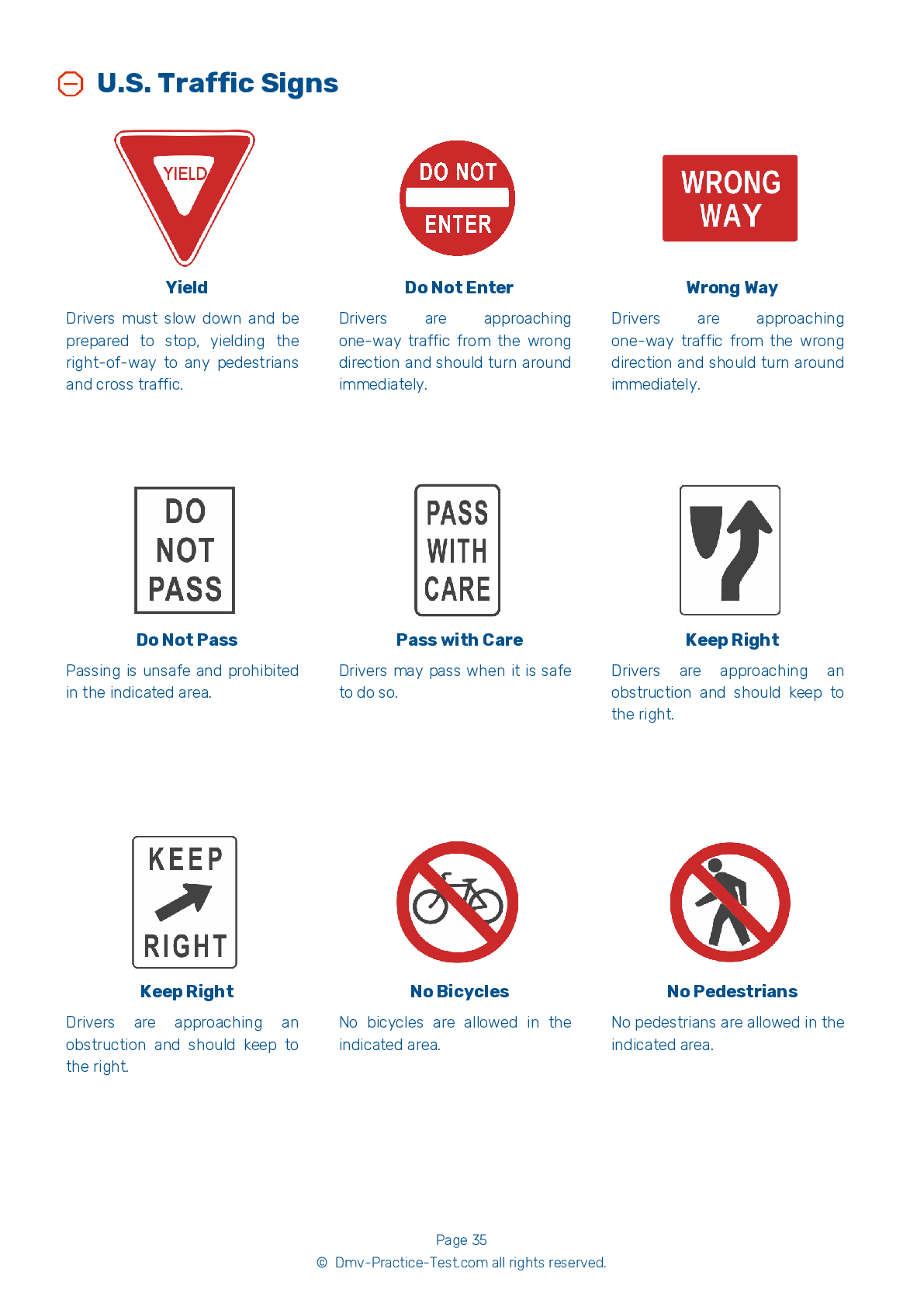Motorcycle Test | License WI 2025 | FREE Online Practice! #2 Page 4 of 5
Take this FREE motorcycle test (license in WI 2025) to check your knowledge of the road rules. To improve your results, download a motorcycle handbook online, study theory, and practice for free on our website. Still worried about how to get a motorcycle license in Wisconsin in 2025? Check our website for more sample tests, train as much as possible, and boost your grades!
25 . This road sign means:
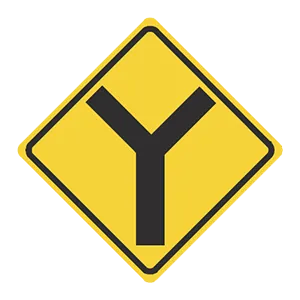
Warning signs are usually yellow with black markings. This sign warns drivers that they are arriving upon a fork in the road and they must bear either right or left.
26 . What does this sign mean?
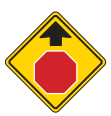
Warning signs are yellow with black lettering or symbols and provide important information to motorists about upcoming road conditions. This sign warns that a stop sign is ahead.
27 . This sign means:
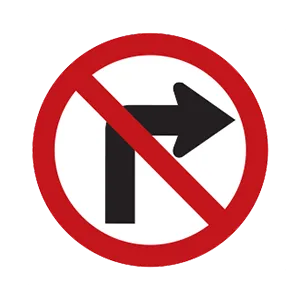
Regulation signs regulate traffic speed and movement, displaying rules which drivers must obey. This regulation sign means that right turns are prohibited.
28 . If you must swerve, you should:
If you must swerve to avoid a hazard, apply a small amount of pressure to the appropriate handle grip. To swerve to the left, press the left handle grip, then press the right to recover. To swerve to the right, press the right handle grip, then the left.
29 . This sign means:
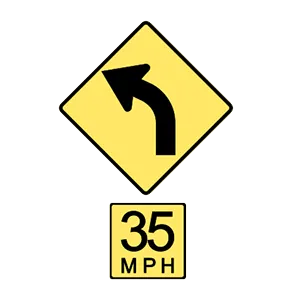
Warning signs are usually yellow with black markings. They alert you to conditions that are immediately ahead. These signs may be accompanied by speed advisory plaques that indicate the speed with which you should proceed.
30 . Where should a load be placed?
Loads should kept low, either fastened securely or in saddlebags. Piling loads against a sissy bar or frame on the back of a seat is dangerous because it can raise the motorcycle's center of gravity and change the balance of the motorcycle. Loads should be equally distributed on both sides of the motorcycle.
31 . What should a motorcyclist do to prevent possible injury when riding on a slippery surface?
When riding on a slippery surface, it is safest to decrease your speed. Making sudden moves on a slippery surface could cause your motorcycle to skid. Do not travel on the shoulder to escape a slippery road.
32 . To improve your chances of being seen, you should:
The single most effective thing you can do to help others see your motorcycle is ride with your headlight on at all times.
See the exact questions that will be on the 2025 Wisconsin DMV exam.
99.2% of people who use the cheat sheet pass the FIRST TIME
Jeneen was tired of paying $5/gallon. She got herself a scooter that required the motorcycle license. She studyed the motorcycle test cheat sheet and passed her test the next day!
Christopher tells us how he knew nothing prior to obtaining the motorcycle study guide, and he only got one question wrong because he clicked on the wrong answer by mistake.
